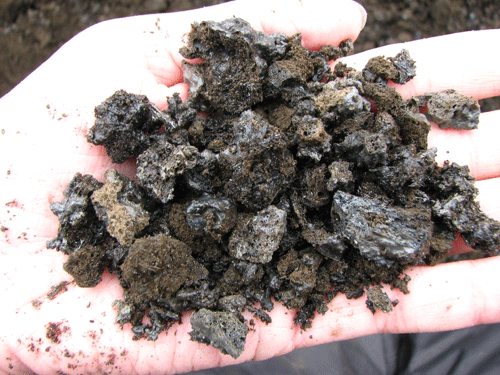Two types of tephra are found today at Lakagígar, providing physical evidence of the styles of volcanism during the 1783-84 eruption. The two tephra types are classified by Thordarson and Self (1993) as strombolian and phreatomagmatic. The strombolian tephra is most common and is characterized by a glassy skin covering the surface of each clast (lapillus), indicating that it was still partially molten as it was falling. These lapilli in fact could be the products of either strombolian or hawaiian style volcanism. The phreatomagmatic tephra has no glassy skin and is entirely vesiculated, indicating that it was completely fragmented upon eruption.

Video: Eruption Animation (0:19)
Check Your Understanding
Question - Multiple Choice
What style of volcanism is shown in the movie above?
Click for answer.
This is an example of a strombolian eruption, characterized by short bursts of lava fountaining.